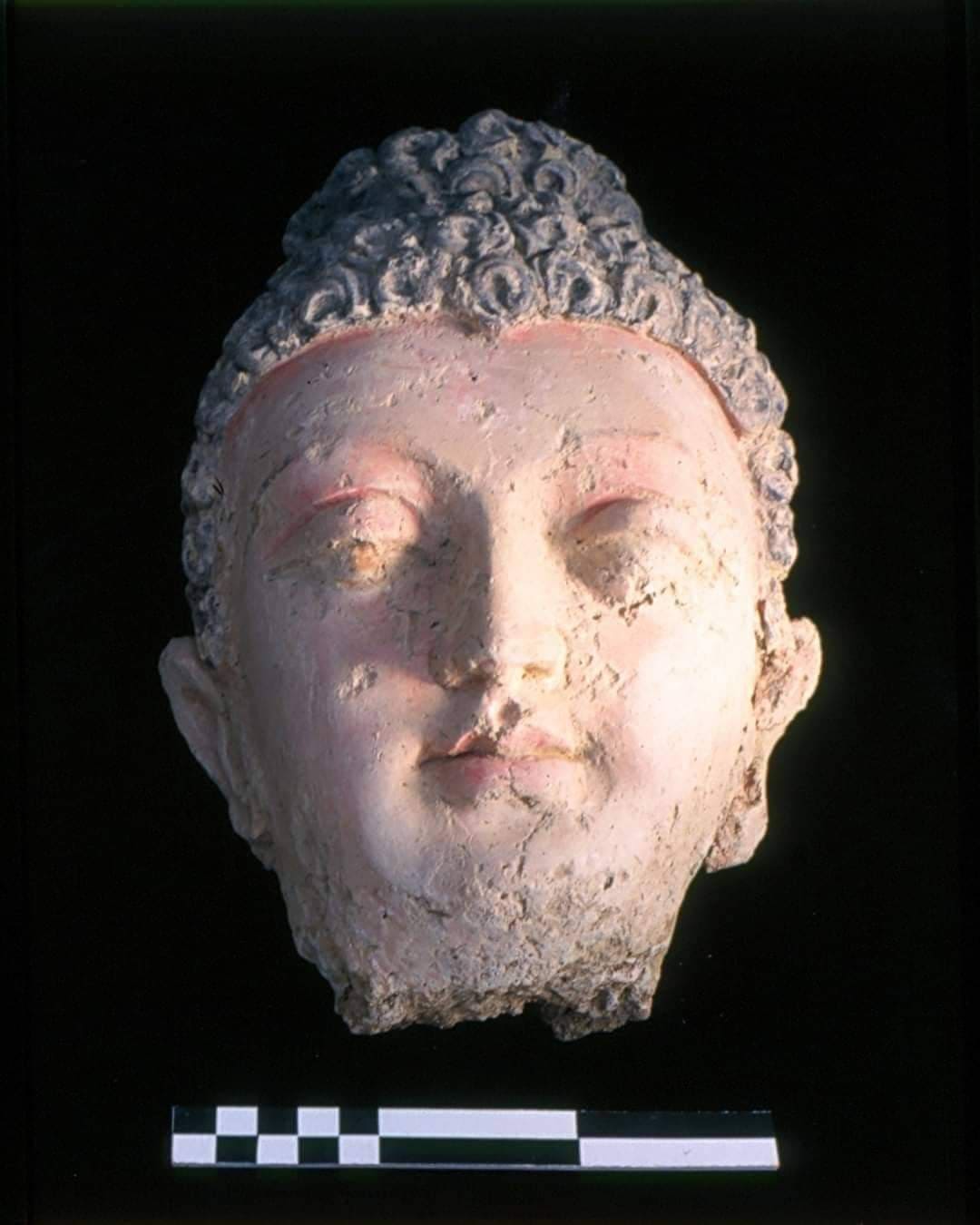Frontline Issue 1
Letter from the Frontier of Gandhara
1. Bamiyan Antiques Burglary Enrage Afghanistan Archaeologists
Keywords: Bamiyan Valley, Stucco Buddha, Seals of Ghurid Dynasty
The former Director of Archaeology Institute of Afghanistan, Professor Tarzi, who resides in France, posted on his social media, said some of the cultural artifacts he had unearthed on the Bamiyan Valley during 2005-2012 were lost during the hegemony handover in mid-August and are now unaccounted for.
The cultural relics unearthed in the new century were initially stored in the Bamiyan authority governed depository under the immediate supervision of the government. The plan is to install them in the new Bamiyan Cultural Center and exhibit them to the public. Given the circumstances of the anarchic state of political status in Afghanistan, many civil servants and office workers in the heritage and museum departments left their jobs. Consequences of lacking adequate supervision led to the recent loss of cultural artifacts. Several theft cases have happened since then. Besides archaeological artefacts, some archaeological instruments such as cameras, laptops, and related equipment were also stolen. This incident has caused widespread concern.
According to Prof. Tarzi, these possibly lost antiques are mainly silver seals from the Ghurid Dynasty (1148-1206). These are essential parts of the historical evidence of ancient Bamiyan. They prove that the Ghurid Dynasty, which spanned Central and South Asia in the 12th century, has effectively ruled the Bamiyan area. It is also possible that there is a second capital near Bamiyan. It is worth noting that Pro. Tarzi has previously led an archaeological team to excavate the Tombs of the Ghurid Dynasty in the Bamiyan in order to coordinate with the construction of the city of Bamiyan.
The Bamiyan site is well-known for the Bactrian and Gandharan cultures during the Buddhist period and contains numerous architectural heritages such as Buddhist caves and citadels. The Bamiyan site is also the site with the most relics of the Islamic period in Afghanistan. Professor Tarzi had conducted in-depth investigations on Buddhist sites such as Bamiyan and Hadda before the Soviet invasion in 1979. His doctoral dissertation was an in-depth study and discussion of cave architecture and decorative arts of ancient sites for instance, Bamiyan and Hadda. According to his Ph.D. student, Dr. Vanlenee, he moved to France in 1979 because of the turbulent domestic chaos. The protection of Afghanistan’s cultural heritage caused by the war is imminent. It also worries scholars from all over the world. We will continue to pay attention to it.


2. Thareli Buddhist Monastery Site Reopen After Restoration
Keywords: Gandhara monastery, Thareli, Conservation
According to the local conservator-restorer Maaz Ali, the restoration project in Thareli monastery has recently been completed. Afterward, this important archaeological site will open to the public shortly.
Thareli, Darada, or Darad in Sanskrit, refers to where the Dards lived, collectively known as Dardistan. It is an intermontane monastery built in the China Tangai Basin- the valley of springs in the Utman Khel Mountains, with an average elevation of about 450 meters. Due to the transportation barrier, the site was almost completely isolated from the outer world. The restoration began in mid-October 2020 and will complete in August 2021 after three quarters of the restoration task. The primary roads and passages construction leading to the site will eventually be paved and put into use.
In the late 19th century, the Archaeological Survey of India, founded by the British, first excavated the Thareli site. In the 1960s and 1970s, the Kyoto University (JAC) archaeological team carried out excavations in the central hillside area C of the site. They had found architectural remains such as the central stupa court, monastery, worship halls, and meeting halls. Moreover, during the campaign, 3051 carvings in stone and 805 sculptures in stucco have unearthed. There are some distinctive carvings with Jātaka themes.
From the viewpoint of art history, it is the era when stone carving decoration prevailed, meanwhile the transitional period to stucco decoration. The coins unearthed in Thareli site are also abundant. At the same time, by comparing to the style of other excavated stupas, sculptures, we can affirm that the active period of the stupa-monastery site was in about 250-350 AD, which belong to the transition period from the late Kushan Dynasty to the Kidara-Kushano era. The overall geographical environment of this monastery is similar to the cave temples in India.
With the reopening of the Thareli site, more people will learn about Gandharan rich relics of a Buddhist monastery and architectural heritage. We are toward a clearer understanding of the religious beliefs in ancient Gandhara.
Reference: Mizuno S., Higuchi, T. Tareri: Gandāra bukkyō jiin ato no hakkutsu hōkoku, 1963-1967 = Thareli : Buddhist site in Pakistan surveyed in 1963-1967. Kyōto-shi: Dōhōsha, 1978.




